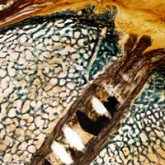Article

Use of a Novel Magnesium-Based Resorbable Bone Cement for Augmenting Anchor and Tendon Fixation
- Author:
- Brandon L. Roller, MD, PhD
- Keiichi Kuroki, DVM, PhD
- Chantelle C. Bozynski, DVM
- Ferris M. Pfeiffer, PhD
- James L. Cook, DVM, PhD
Publish date: February 13, 2018
